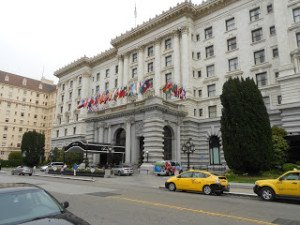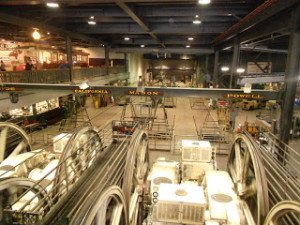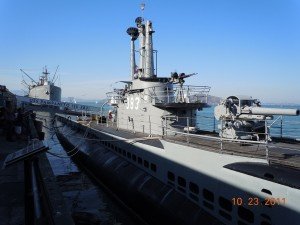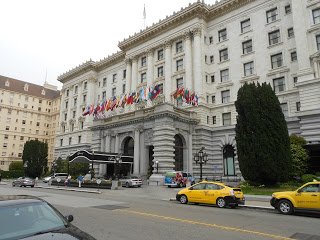For those with the opportunity to visit San Francisco, California..one of the unique cities in the U.S… they will not find a shortage of historic, fun and one of a kind sites to visit. In this article we wanted to highlight three of these sites...Nob Hill…the Cable Car Museum and the World War Two submarine, U.S.S. Pampanito.
Thank you for reading this post, don't forget to subscribe!
Nob Hill
The Nob Hill area came into being in the late 1800’s when the city of San Francisco was growing rapidly. New neighborhoods were being created every year and would eventually reach westward all the way to the Pacific Ocean.Nob Hill was originally the location where wealthy San Franciscan’s once desired to build their mansions.
The views from Non Hill were second to none. From Nob Hill you could have great views of both the city and bay.
The Fairmont Hotel
One of the most well known hotels on Nob Hill is the Fairmont. This outside of this hotel has been seen featured in movies and television over many years. The Fairmont Hotel was still in it’s final construction stage when the great earthquake and fire of 1906 destroyed San Francisco.
After the earthquake, the building itself remained intact. The interior however was severely damaged by fire and as a result the hotel’s opening was pushed back one year until 1907. During this time the building was also reinforced with concrete that could help it survive another earthquake. For those wondering how the hotel received it’s name, it was named after U.S. Senator James Graham Fair. It so happened the hotel was constructed by his daughters, Virginia Fair Vanderbilt and Theresa Fair Oelrichs.
The Mark Hopkins Hotel
Another well known hotel you’ve most likely heard of is the Mark Hopkins. The Mark Hopkins Hotel had a very different history than it’s neighbor the Fairmont. The land where the Mark Hopkins sits was at one time the home of Mark Hopkins, one of the Big Four investors and founders of the famous Central Pacific Railroad.It was the Central Pacific which met the Union Pacific in Utah to form the nation’s first transcontinental railroad.
Cable Car Museum
If you have an opportunity to visit San Francisco, one very fun and educational stop to make is the Cable Car Museum. There is no charge to visit the museum.The Cable Car Museum not only showcases vintage San Francisco cable cars, cable car mechanisms and their fascinating history but also lets you see for yourself just how the system operates today.

The museum is also a cable car power house which operates the underground cable system today. The museum is obviously unique where you can get a feel for the old cable car days as well as the ones you ride today.
The power house itself is off limits to visitors, there are two galleries which allow you to see the cables and machinery in action. There is also an area underground where visitors can see the cables operating under Washington and Mason Streets pulling along the cable cars up above.
The Cable Car Museum is truly one of the most unique you’ll come across during your travels.
You may also enjoy the Trips Into History articles on the links below…
One of a Kind Stops Along Old Route 66
See the USS Midway / San Diego’s Premiere Attraction
Submarine Museum / U.S.S. Pampanito
If touring an old World War Two diesel submarine interests you than be sure to see the U.S.S. Pampanito. Located at Fisherman’s Wharf, this submarine is open for tours inside the submarine from front to back. The USS Pampanito is a treasure and has quite a patrol record in the Pacific during the war. This self guided tour will give you a great feel for what it was like serving on her and living in cramped quarters for extended periods.

The history of the U.S.S. Pampanito is as follows… The vessel was built in 1943 at the Navy Yards in Portsmouth New Hampshire. The cost of her construction was six million dollars which was quite a lot of money in the early 40’s but probably sounds like a rock bottom bargain price for a submarine today. The Pampanito is 311 ft 9 inch in length and her beam is 27 ft 3 in. Her typical crew compliment was 70 enlisted men and 10 officers.
The submarine’s operating depth was about 400 feet and her speed was 21 knots on the surface and about 9 knots while submerged.
After the Pampanito’s shakedown cruise in the Atlantic, the new submarine headed directly for Pearl Harbor via the Panama Canal and arrived there in February 1944. Her deployment therefore was during the latter part of the Pacific War. Between 1944-45 the Pampanito completed six war patrols in the Pacific Theater. There are maps that show the areas of each one of her patrols.
(Article and photos copyright 2016 Trips Into History)

